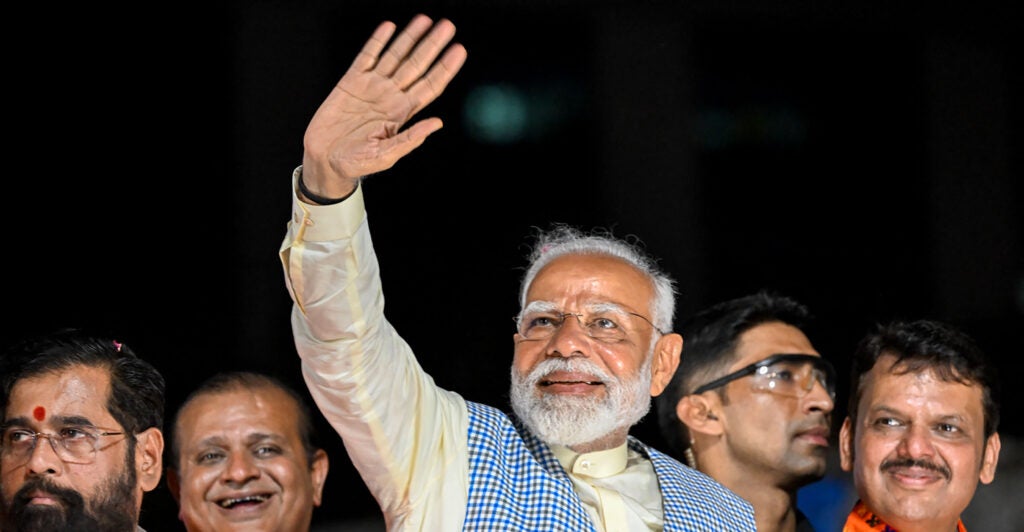Editor’s note: This is a lightly edited transcript of the accompanying video from professor Peter St. Onge.
As anti-elite populism rises worldwide, from the U.S. and Europe to Latin America, the socialists are fighting tooth and nail, using everything from cynical election coalitions in France to outright censorship and jailing dissenters in Britain.
But there’s one big country where populism has now taken over: India.
Since first taking office in 2014, Prime Minister Narendra Modi has managed to gain widespread support for populism: He regularly polls around 80%, gaining support from both working-class and middle-class Indians. And he’s won an unprecedented three terms in India’s rambunctious democracy.
A recent Ipsos poll found 77% of Indians think the country is on the right track, compared to 35% of Americans, 30% in Canada, 21% of Brits, and 18% of the French.
Modi’s success is down to three factors: First, an emphasis on nationalism as a unifier, as opposed to the Left’s tribalism. Those on the Left, naturally, frame nationalism as itself divisive, as they do in America, because they’re addicted to promoting civil war.
Second, Modi has delivered relatively competent government and strong economic growth to the long-suffering voters of India. Outside of COVID-19, Modi has delivered 7% to 8% gross domestic product growth. The country is building coal and nuclear plants while America and Europe screw around with green handouts. And India’s cities are much safer than, say, blue cities in America and Europe.
The third is a widespread feeling in India that the system’s broken under decades of the previous ruling party called Congress, so many Indians were open to a strong personality to push through radical change. This is actually true in the U.S. and Europe as well—the people are ready for change—but left-wing media diffuses that anger away from reform and into that tribalism.
That’s divide-and-rule by the media-aligned elite.
As for Modi, he just won a third five-year term—albeit with coalition partners—and he’s now promising to make India a developed country in 25 years by bringing back manufacturing and improving digital infrastructure.
That may actually be possible. India is already the world’s largest exporter of information technology and business services at $193 billion last year. And it’s scooping up manufacturers fleeing China over rising costs and political risks ranging from Beijing’s police state to China’s trade friction with the West.
As The Economic Times put it, for manufacturers, Modi replaced the red tape with the red carpet, inviting the kind of foreign investment that developed places like South Korea, Taiwan, and China itself.
Still, there are a lot of challenges. India remains desperately poor, thanks to decades of socialism imported from postwar Britain. For example, a recent survey found just half of Indians can afford three meals a day. Modi remains in trench warfare with India’s deep corruption. A recent medical-test scandal brought it back to the headlines.
And, y’know, the street vendors.
Moreover, even if Modi’s bringing manufacturing back, a worldwide recession in America and Europe will slow or stop India’s growth in the near term.
So, what’s next?
Modi’s populist success in India is an example for those of us who want more power for the people, as opposed to corporate and political elites.
Emphasizing nationalism over race or class, delivering the goods in governance, and tapping into widespread dissatisfaction with corrupt elites, apparently, get the job done.
We publish a variety of perspectives. Nothing written here is to be construed as representing the views of The Daily Signal.
